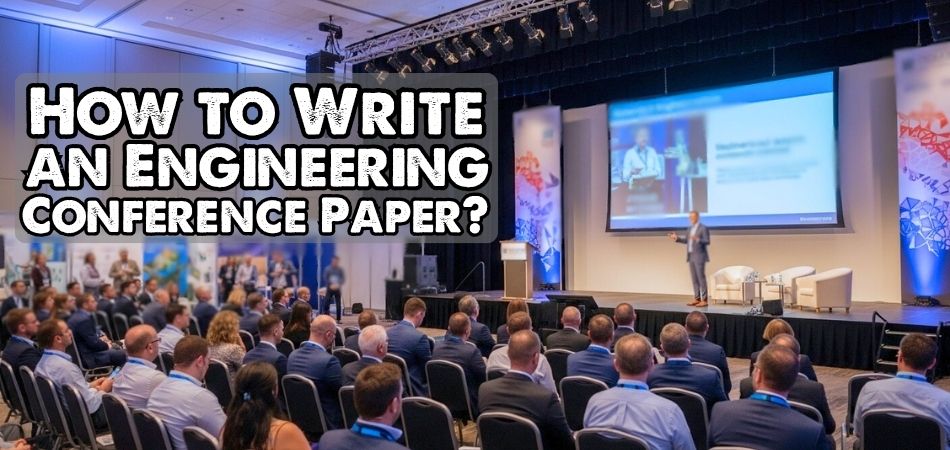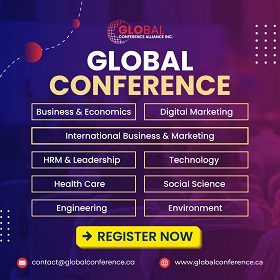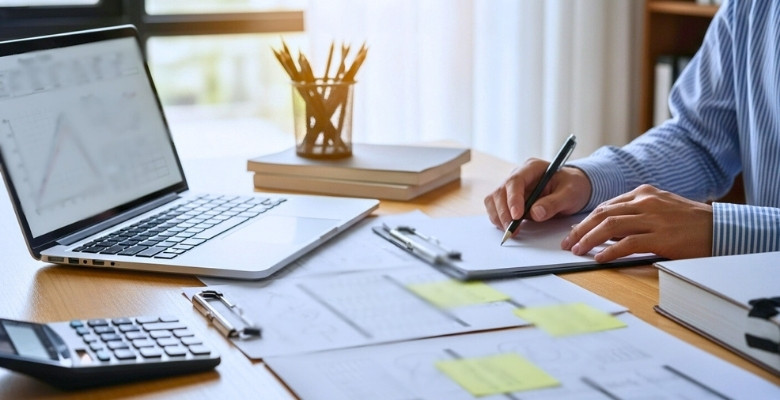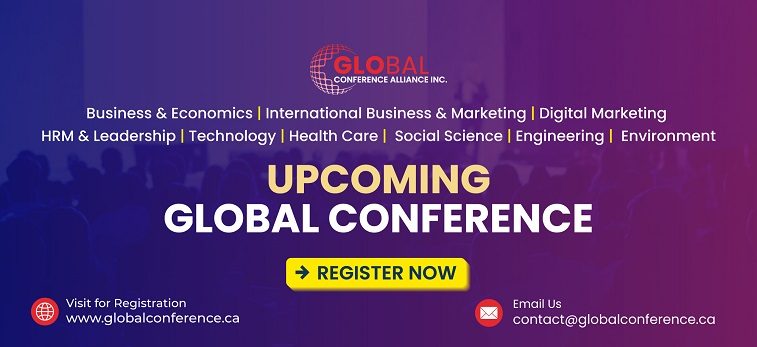An engineering conference paper is a great way to share smart ideas with others. It’s not just about showing results—it’s also about explaining them clearly and in the right format. If you’ve ever found yourself wondering how to write an engineering conference paper, you’re not alone.
Write an engineering paper by following a clear structure. Start with the topic, then write an abstract, introduction, method, results, and conclusion. Add references and review before submission. Keep writing simply and focused, and follow the conference’s format.
If you want to learn more about writing a strong paper, this article will guide you through every step. It explains what to include and how to keep your writing clear. Keep reading, and you’ll get all the information you need to succeed.
How to Write an Engineering Conference Paper?
Writing a paper for an engineering conference might seem like a big task, but it becomes much simpler when you break it into steps. There’s a clear format most papers follow. Stick to that, and you’re on the right track. Let’s explore how to do it right from start to end.
Know the Topic
Every conference has its own main idea or theme. Before you start writing, make sure you understand what the conference is all about. This helps you stay on the right track. If you’re planning for global events like conferences in USA, Canada, or any other country, reading the guidelines is extra important so you know exactly what they expect from your paper.
Short Abstract
This is a short paragraph that tells the whole story of your paper in just a few lines. It should explain the main problem, the way you tried to solve it, the results you got, and what those results mean. Think of it like a mini version of your full paper. Keep it between 150 to 250 words. Don’t add too much background—focus on the main points only.
Clear Introduction
Start by explaining the problem you wanted to solve and why it matters. Then, add a bit of background so the reader understands the topic better. You can also mention how others have handled this problem before. Don’t forget to say what makes your work different or useful. This section sets the scene, so keep it simple and clear to draw readers in.
Method Description
Here, you explain how you did your work. Write about the tools or equipment you used and the steps you followed. It’s like giving someone instructions to repeat what you did. Keep things short and easy to understand, but give enough detail so the reader sees you did the work carefully. If someone wants to try the same method, they should be able to follow your explanation.
Show Your Results
After explaining the steps, share what happened. Use graphs, charts, or tables if needed—but make sure you talk about each one before showing it. That helps readers know what they’re looking at. You don’t need to explain every tiny number; just focus on what matters most. Keep this section neat and well-organized, so it’s easy to follow.
Make Sense of It
Once you’ve shared your results, it’s time to explain what they mean. Were the results what you expected? Did anything surprising happen? Talk about what went well and what didn’t. Mention any problems and how they affected your results. This part helps readers understand how your results connect to the original problem and whether your method worked.
Finish Strong
The final part of the main paper should tie everything together. Repeat your most important findings in a few lines. Also, share what could be done next or how your work can help others in similar projects. A strong ending leaves a good final impression. Keep it simple, and don’t repeat too much of what you already said earlier.
Add References
This is where you list all the books, websites, or articles you used. Make sure each one is written in the correct style, like IEEE or APA—whatever the conference asks for. Always give credit to the original sources. Never copy anything without saying where it came from. Good references show you did your research properly and respect others’ work.
Final Cleanup
Before sending your paper, read it out loud. This helps you find mistakes or awkward parts that you might miss when reading silently. Fix anything that sounds off or confusing. Also, check the page limit, font size, and line spacing. Many conferences have strict rules, and you don’t want to lose points for small errors. A careful check at the end makes a big difference.
Ending your paper the right way shows how serious and thoughtful your work is. Stick to the basics, follow the structure, and keep your writing clear. That’s the best way to create a strong engineering conference paper.
Key Sections to Include in an Engineering Conference Paper
A paper for an engineering conference may sound serious, but it’s really about sharing what you’ve learned. You will be able to understand your work better if you know what to include and where to put it. Stick around, and you’ll see how each section works.
- Title Page: This is where you write the paper’s title, your name, and the name of the conference where the paper will be shared.
- Abstract: A short and clear summary that quickly tells what your paper is about, what you did, and what results you found.
- Introduction: Helps the reader understand the topic, why it matters, and what problem you are trying to solve with your work.
- Methods: Describe how you did your research step by step, so others can follow or repeat what you did if they want to.
- Results: Shares the outcome of your work without giving opinions, usually using numbers, charts, or simple data to explain clearly.
- Discussion/Conclusion: This part talks about what the results mean, why they are important, and what can be done next based on them.
- References: A list of all the sources you used in your paper, showing where your facts and ideas came from.
Each part of the paper is like a building block that helps tell the full story. When everything is in the right place, your work becomes easy to understand. A good structure also makes your ideas stand out better. Just take it step by step, and you’ll be all set.
How to Choose a Relevant Topic for Your Engineering Conference Paper?
Picking the right topic for an engineering paper might feel confusing at first. You don’t want something too common, but you also don’t want it to be too difficult to understand. The key is to stay focused and think smart. Let’s look at some simple ways to pick a strong topic.
Check Current Trends
One good way to start is by looking at what’s popular in the engineering world right now. You can check tech news, recent inventions, or tools that people are using. If you spot something that’s getting a lot of attention, it could be a great topic. Choosing a trending idea means people will be more interested in reading your paper.
Find a Real Problem
Think about things around you that don’t work well or could be better. Real-life problems often make the best topics because they feel useful and needed. It could be something small in daily life or something big in your area. If you can come up with a smart way to fix it, that’s already a great paper idea.
Explore Research Gaps
Sometimes researchers talk about things they didn’t get to finish or areas that still need work. These are called gaps. You can find them by reading science news or simple research summaries. Picking a topic from a gap means your work adds something new, which makes it more interesting and valuable for others to read.
Match the Conference
Every conference has its own theme or focus. Before picking your topic, read the details given by the conference. Make sure your topic fits what they are looking for. Even if your idea is great, it won’t help much if it doesn’t match the main subject of the event.
Stay Simple and Clear
A topic doesn’t have to be big to be smart. Choose something you can understand and explain clearly. If a topic is too wide, break it into smaller parts. A simple and clear topic is easier to research and write about, and it helps readers understand your ideas better.
Choosing the right topic takes a little time, but it’s worth it. The better the topic, the easier the writing becomes. Use simple ideas and focus on what really matters. With the right topic, everything else starts to fall into place.
Tips for Writing a Strong Abstract for an Engineering Conference Paper
Writing an abstract for an engineering conference paper is like giving someone a sneak peek into your hard work. It tells readers what your paper is about before they dive in. A good abstract can help your paper get noticed by reviewers and attendees. Want to make yours stand out? Keep reading to learn how to write it the right way.
- Start with the main idea: Share the big problem you worked on and why it matters. This helps people quickly understand what your paper is about.
- Explain what you did: Briefly describe the method or steps you followed. Don’t go deep into details—just give a short idea of your process.
- Mention your results: Let the reader know what you found out or achieved. Good results can grab attention and make your paper more interesting.
- Keep your words simple: Use easy and clear language. Avoid using hard or confusing terms, so anyone reading it can understand quickly.
- Stick to the point: Make sure everything you write is directly related to your paper. Don’t add extra information that isn’t needed.
- Use strong keywords: Pick a few important words that match your topic. These help people find your paper when they search for similar subjects.
- Keep it short but complete: Even though it’s short, your abstract should still cover all the key parts—problem, method, result, and purpose.
Writing a strong abstract doesn’t need to be hard if you follow simple steps. It’s your chance to quickly show why your work matters. Reviewers read the abstract first, so make it count. A good abstract can open the door to sharing your ideas with a wider audience.
Formatting Guidelines for an Engineering Conference Paper Submission
You need to follow the right format when submitting a paper to a conference in engineering. It helps your paper look clean and professional. Most conferences use IEEE or ACM styles, and each has its own rules. Here’s a quick table to help you understand the key formatting details.
| Category | IEEE Format | ACM Format |
| Paper Size | US Letter (8.5″ × 11″) or A4 | US Letter (8.5″ × 11″) |
| Columns | Two-column layout for the main body | Single-column for submission, double-column for final version |
| Font Style | Times New Roman | As per the ACM template (uses Libertine by default) |
| Font Size | Title: 24–26 pt, Body: 10 pt, Author Info: 10–11 pt | Body text: 10 pt (handled by template) |
| Margins | Top: 0.75″, Bottom: 1″, Left/Right: 0.65″–0.75″ | Controlled by template |
| Line Spacing | Single-spaced, justified text | Controlled by template |
| Paragraph Format | Indent: 0.2″, 6 pt space after paragraphs | Template manages paragraph spacing |
| Title Format | Centered, Title Case, 24 pt | Title formatting managed by template |
| Abstract Format | Labelled as “Abstract—” in bold, no heading | Abstract formatted by template |
| Page Limit | Usually 4–6 pages (varies by conference) | Typically 8–14 pages (varies by conference) |
| Figures/Tables | One- or two-column format; captions 8–10 pt | Template manages figure/table layout and captions |
| Page Numbers | Not included in the submission | Not included in the submission |
| Keywords | Listed after the abstract | Listed after the abstract |
| Citation Style | Numbered in-text: [1], [2] | Numbered [1] or Author-Year (depends on conference) |
| Reference Format | IEEE Reference Style (numbered, ordered by appearance) | ACM Reference Format (full names, ordered by appearance or alphabetical) |
IEEE Conference Paper Sample:
Title of the Paper in Title Case and Bold
Author Name1, Author Name2
Department, University Name
City, Country
email1 @example.com, email2 @example.com
Abstract—This paper presents a method to reduce energy loss in power systems using a smart control technique.
The method is tested under different load conditions and shows promising results in terms of efficiency and speed.
Keywords—Power Systems, Energy Loss, Smart Control
I. INTRODUCTION
Power systems often face problems with energy loss due to transmission and load changes. Improving control systems
can reduce these losses significantly.
II. METHODOLOGY
A feedback-based control algorithm is used. It adjusts power levels dynamically depending on real-time readings.
III. RESULTS
The proposed method reduces loss by up to 18% in test scenarios. It also keeps voltage levels within acceptable limits.
IV. CONCLUSION
The control method is simple, fast, and effective. It can be used in real-world power systems to improve performance.
REFERENCES
- J. Smith, “Smart Control Systems,” IEEE Trans. Power Syst., vol. 34, no. 4, pp. 1234–1240, 2023.
- A. Kumar, “Reducing Transmission Loss,” in Proc. IEEE Conf. on Energy, 2022, pp. 55–60.
Once your formatting aligns with the required template, you’re ready to submit a paper to an engineering conference through their designated portal or submission system.
How to Use Figures, Tables, and Equations Effectively in Your Engineering Conference Paper?
Using figures, tables, and equations in your paper can make your work easier to understand. They help show data, explain ideas, and make points stronger. But to work well, they need to be used the right way. Let’s look at how to do that.
Keep It Clear
Always make sure your figures, tables, and equations are easy to read. Use simple lines, clear labels, and clean layouts. Don’t add too many details that can confuse the reader. When things are neat and not too busy, it’s much easier for people to follow your ideas and understand your work better.
Label Everything
Every figure and table needs a title and a short note saying what it shows. Put numbers like “Figure 1” or “Table 2” so you can talk about them in your writing. This helps readers know what they are looking at. Good labels save time and make your paper look more organized and professional.
Place Them Right
Where you put your figures, tables, and equations matters a lot. Always place them close to the part of your paper where you talk about them. This keeps the reader from having to scroll up or down to find what you’re talking about. It makes reading smooth and less confusing.
Explain Their Use
Just adding a figure or table isn’t enough. You also have to talk about it in the text. Say what it shows, why it matters, and how it supports your point. If it’s a math equation, explain what each part means so people don’t get lost while reading.
Don’t Overdo It
Use figures, tables, and equations only when they really help explain something better. If something is easy to say in one sentence, you don’t need a whole chart. Using too many can make your paper feel crowded. Pick the most important ones and use them well.
Figures, tables, and equations can really help your paper stand out when used correctly. They make hard ideas easier to understand and show your work clearly. Just keep them simple, explain them well, and always use them where they truly help.
How to Handle References and Citations in an Engineering Conference Paper?
Writing a paper often requires using facts, ideas, or research from someone else. That’s totally okay, as long as you give credit the right way. Want to know how to do that without messing things up? Keep reading to find out.
Give Proper Credit
Whenever you use someone else’s idea, data, or sentence, you need to say where it came from. This is called a citation. It’s a way to give credit and show that your work is honest. Whether it’s from a book, website, or another paper, don’t forget to mention it.
Use the Right Format
Different conferences ask for different citation styles. Some want names and years, while others like numbered lists. Always check the rules before you start. If you follow the format they ask for, it makes your paper look more polished and easier to read.
Know When to Cite
Unless the idea came from you, you don’t need to cite everything. Use a citation when you use facts, quotes, or even ideas you found elsewhere. If it’s common knowledge—like water boils at 100°C—you don’t need to cite that.
Try Citation Tools
You don’t have to do everything by hand. Tools like EndNote, Zotero, or BibTeX can help you collect, sort, and insert your references quickly. They also format everything for you, which saves time and avoids mistakes. Just pick the one that feels easiest for you.
Avoid Copying
Plagiarism means copying someone’s work without giving credit, and it’s a big problem in writing. Always use your own words and explain ideas in your own way. If you copy something exactly, put it in quotes and give the name of where it came from.
Using references the right way shows that your paper is built on solid information. It also proves that you respect others’ work and understand your topic well. Keep your sources clear, your format neat, and your writing original—then your paper will be in great shape.
What Happens After Your Engineering Conference Paper Is Accepted?
Getting your engineering paper accepted is a great feeling, but the work doesn’t stop there. There are a few important steps to take before the conference happens. What comes next can be both fun and a little stressful. Let’s break it down simply so you’re ready for what’s ahead.
Prepare Your Slides
One of the first things to do is make a simple and clear slide presentation. Use short points, clear images, and charts that support your paper. You don’t need too many slides—just enough to cover your main ideas. Practice what you’ll say with each slide so you don’t get stuck during your talk. A clean, neat design works better than something that’s full of colors and animations.
Register for the Event
Before you can attend the conference, you’ll need to sign up. This is called registration. Sometimes it’s free, but other times there’s a fee. Don’t wait too long, because there’s usually a deadline. When you register early, you can also plan your travel or online setup better. Always double-check if you need to do anything else before the big day.
Practice Your Talk
Once your slides are ready, it’s time to get comfortable with speaking. Practice in front of a mirror or a friend. This helps you feel more relaxed. You don’t need to memorize every word—just know the key points. Once accepted, you may be required to present your work, which brings both opportunities and challenges. It’s worth considering the pros and cons of speaking at engineering conferences before stepping up to the podium.
Get Ready to Attend
If the conference is in person, plan your trip ahead of time. Pack anything you need, like printed handouts, ID cards, or gadgets. If it’s online, test your internet and microphone a day before. Make sure you know the schedule so you don’t miss your turn. It helps to check the time zone too, if it’s not local.
Talk with Others
During the conference, don’t just present—try to talk with other people too. You can ask questions, listen to other talks, or just say hello to someone. These small chats can help you learn new things or even give you ideas for your next project. It’s a good way to be part of the engineering world.
Once your paper is accepted, it opens the door to many new experiences. Taking the right steps after that makes a big difference. Whether it’s preparing slides or talking with others, each part helps you grow. Just stay focused and enjoy the moment.
Common Mistakes to Avoid When Writing an Engineering Conference Paper
Writing an engineering conference paper is a big task, and doing it right really matters. Even small mistakes can make a strong paper seem weak or confusing. Many people make common errors that can be easily avoided. Keep reading to learn what to watch out for while writing.
Vague Problem Statement
If the main problem in your paper isn’t clear, readers won’t understand what you’re trying to solve. You need to explain the problem in simple words and show why it matters. A confusing or unclear start can make people lose interest. Always take time to write a strong and direct opening that gives a clear picture of the issue.
Not Enough Data
You can’t just say something works—you have to prove it with data. If your paper has very little or no data, people might not believe your results. Good data shows that you tested things properly. Try to include numbers, charts, or facts to back up what you’re saying and make your work more solid.
Too Much Jargon
Using big technical words everywhere can make your paper hard to read. While some terms are needed, it’s best to keep the language simple and clear. Not everyone reading your paper may know all the fancy words. Writing in a plain and easy way helps more people understand and enjoy your work.
Ignoring Formatting Rules
Most conferences have strict rules for how your paper should look. Ignoring these rules can get your paper rejected before it’s even read. Always follow the formatting instructions given, like font size, column layout, and headings. It shows that you’ve paid attention and taken the submission seriously.
Weak Conclusion
Readers are left confused when a paper ends without a strong message. Your conclusion should clearly wrap up what you did, what you found, and why it matters. Skipping this part or making it too short can weaken your whole paper. Take your time and write a final paragraph that sums things up well.
A good engineering paper is not just about the ideas—it’s also about how clearly and carefully you share them. Avoiding these mistakes can make your paper stronger and easier to read. Always take time to check and improve before you submit.
FAQs About How to Write an Engineering Conference Paper?
If you’re just getting started, you might have many small questions that don’t always get answered in big guides. Writing a paper for an engineering conference can be a challenge. Because of this, we have compiled a list of common questions people often ask. This FAQ covers important tips that can help you write a stronger paper and better grade.
How Long Does It Take to Write a Conference Paper?
Writing a conference paper usually takes a few weeks to a couple of months. It depends on how much research you already have and how much time you can spend each day. If you start early and plan your work, you won’t feel rushed. Working a little each day is better than trying to do everything at the last minute.
Can I Write a Paper If I Don’t Have a Big Invention?
Yes, you can still write a paper even if you haven’t invented something new. You can talk about how you improved an old idea, tested something in a new way, or solved a small but real problem. Many papers are about simple ideas that were tested carefully. What matters is your effort and the way you explain it.
Is It Okay to Work With a Friend or Classmate on the Paper?
Yes, working with a friend or teammate is allowed and can even make the paper better. You can share ideas, check each other’s writing, and divide the work. Just make sure both of you do your part and agree on what goes into the paper. Always list both names in the paper if you worked as a team.
What If I Make a Mistake in My Paper After Submitting It?
If you find a mistake after sending your paper, don’t worry too much. You can email the conference team to ask if changes are still allowed. Sometimes, small edits can be made before the paper is printed or presented. That’s why it’s always good to review carefully before you submit.
Do I Need to Use Big Words to Sound Smart?
No, using big or difficult words doesn’t make your paper better. What’s more important is that people can understand what you are saying. Using simple and clear words shows you really understand your topic. Even top scientists use plain language to explain their work clearly.
Can I Add a Picture or Diagram I Found Online?
You should only use pictures or diagrams from other sources if you have permission or if they are free to use. Always say where the image came from in the caption. If you’re not sure, it’s safer to make your own drawing or chart. This way, your paper will be original and honest.
Is It Okay to Use AI Tools to Help Write My Paper?
AI tools like grammar checkers or sentence helpers can be used to make your writing better. But you should never copy full parts of your paper from any tool or website. Your ideas must be your own, and the tool is just there to help you write clearly. Always review and edit the final paper yourself.
What Should I Do If I Don’t Feel Confident About My Writing?
It’s normal to feel unsure when writing your first paper. Ask a teacher, friend, or senior student to read your work and give feedback. You can also read other sample papers to learn how they’re written. With practice and support, you’ll feel more confident each time you write.
Can I Use a Language Other Than English for My Paper?
Most international engineering conferences require papers to be written in English. But some local or regional conferences may accept papers in their native language. Always check the rules of the specific conference. If English isn’t your first language, try writing in simple sentences and get help with proofreading.
What Happens If My Paper Is Not Accepted?
If your paper isn’t accepted, don’t be discouraged. It happens to many people, even professionals. You can learn from the comments given and improve your paper for the next time. Rewriting and trying again is part of becoming a better writer and researcher.
Bottom Line
Writing a strong engineering conference paper is all about sharing your ideas clearly and showing your hard work. When you break it into smaller steps—like picking a topic, planning the structure, and checking the format—everything becomes much easier. Take your time to make each part neat and simple so your message is easy to understand and follow.
So, how to write an engineering conference paper? The answer is to follow a clear format: start with a short abstract, write an engaging introduction, describe your methods and results, and finish with a solid conclusion. Use easy language, include visuals when needed, and always give credit to your sources properly. This structure helps your paper get accepted and understood by more people.









